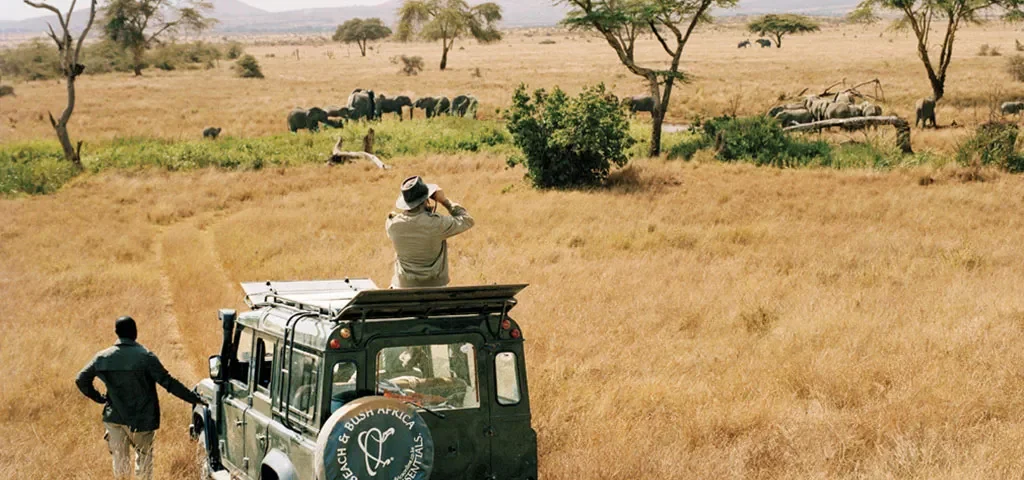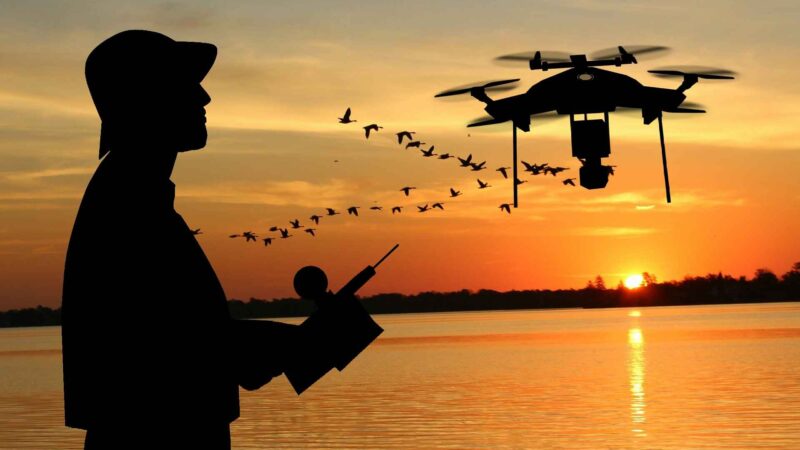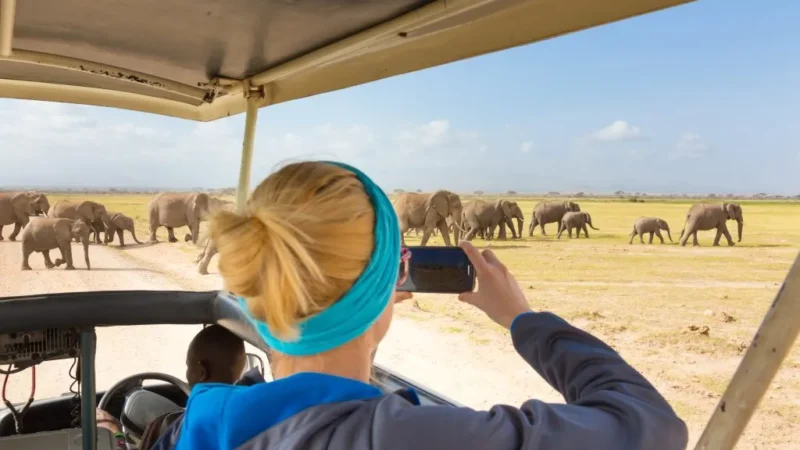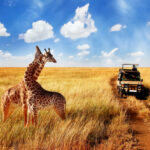
Best Time to Visit Tanzania: Safari Seasons Explained
April 22, 2025
Taste of the Wild: What You Eat on a Safari in East Africa
April 23, 2025A Day in the Life of a Safari Guide: From Prep to Storytelling to Animal Tracking
When you think of an African safari, you probably imagine breathtaking landscapes, incredible wildlife, and maybe even the roar of a lion at sunset. But behind every successful safari lies the passion, precision, and personality of one key figure: the safari guide. These skilled professionals do far more than drive the jeep — they are storytellers, wildlife experts, safety officers, and often the heart of the safari experience.
At Traford Safaris Ltd, we believe our guides are not just employees; they are custodians of East Africa’s wilderness and ambassadors of our commitment to unforgettable and ethical travel. In this article, we invite you on a behind-the-scenes journey into the day-to-day life of a safari guide. Whether you’re planning your first adventure or reminiscing about past travels, this insider’s look will give you a deeper appreciation of the people who make your safari magical.
Early Morning Rituals: Preparing for the Day Ahead
Long before guests awaken to the sounds of birdsong or the rustling savanna breeze, safari guides are already up and preparing for the day. The African wilderness demands alertness at every turn, and it starts with preparation.
By 5:00 a.m., most guides are up checking the vehicle — tires, engine, fuel, and most importantly, supplies like binoculars, first-aid kits, refreshments, and route maps. Many also take time to scan the latest wildlife movement reports, shared among rangers and other guides the evening before or early in the morning via radio.
This pre-dawn routine isn’t just about logistics — it’s also spiritual. Many guides take a few quiet moments to connect with nature, appreciating the calm before the adventure begins. They may walk a short distance from camp to listen to the distant calls of hyenas or observe the soft glow of sunrise on the horizon.
By 6:00 or 6:30 a.m., it’s time to welcome guests, often with warm coffee, a light breakfast, and a big smile.
Setting Out: The First Game Drive of the Day
The first game drive typically begins just after sunrise — a magical time when wildlife is most active and the light is perfect for photography. Guides skillfully navigate the terrain, steering through rugged paths with ease while maintaining a keen eye for tracks, movement, and sound.
But it’s not just about spotting animals. This is where the storytelling magic happens.
A great safari guide doesn’t just say, “There’s a lion.” They paint a scene. They might explain how the lioness is scouting for prey while her cubs stay hidden nearby. They talk about the delicate balance between predator and prey, how the lion’s social structure works, and even connect the moment to broader conservation challenges facing these animals.
And all of this happens in real-time, in a moving vehicle, with guests asking questions, taking photos, and reacting with awe. The guide must be engaging yet educational, always respectful of the animals and their space.
Exceptional guides tailor each drive to the interests of the group — birders may get a different route than big cat enthusiasts. Every decision is deliberate, based on years of experience and real-time observation.
Animal Tracking: Reading the Wild Like a Book
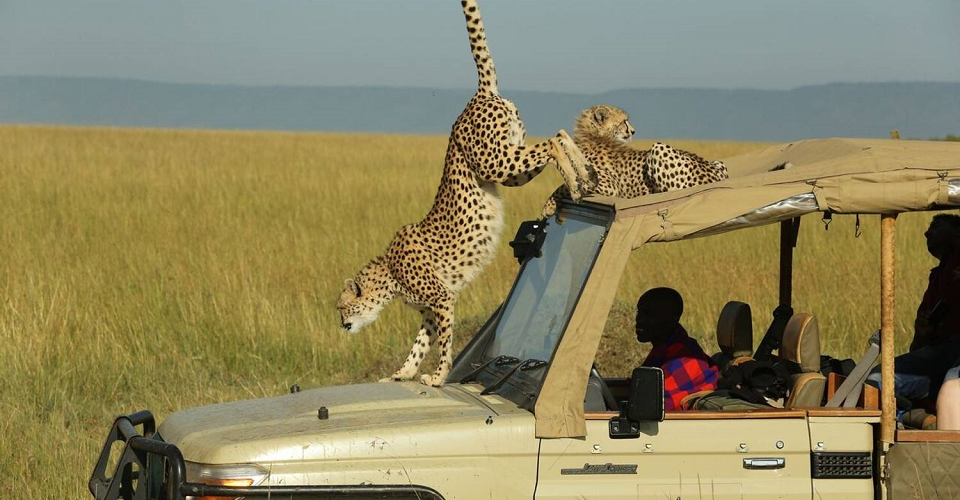
Tracking animals is an ancient art form, and our guides are masters at it. They read the wilderness like an open book — identifying paw prints, droppings, snapped branches, disturbed soil, and even the warning calls of other animals to predict wildlife movement.
Imagine this: It’s mid-morning, and a guide notices fresh leopard tracks on a dusty path. He pauses, steps out carefully to examine them, noting the direction and age of the tracks. Nearby, impalas are nervously alert, ears twitching — another sign that a predator is close. A silent signal is given, and the vehicle slowly follows the trail. Minutes later, the guide brings the vehicle to a quiet stop, raising a hand to hush the group.
Perched on a low branch, camouflaged in dappled light, is the leopard. Moments like these are why people travel from across the globe — and it’s the guide’s skill, patience, and intuition that make them possible.
Tracking also involves understanding migration patterns, seasonal behavior, and even the psychology of animals. Some guides train for years to perfect this, often learning from older trackers, indigenous communities, and hands-on field experience. At Traford Safaris Ltd, we prioritize guides who blend science with instinct — because true tracking is both.
Midday Break: Rest, Regroup, and Reconnect
After the morning drive, typically around 10:30 a.m., it’s time to return to camp or lodge for brunch. Guests relax, but guides rarely rest completely.
Many use this time to clean equipment, update logbooks, or prepare for afternoon excursions. They may also brief the camp manager about guest preferences, special sightings, or logistical needs for the rest of the day.
However, guides do find moments to recharge — a cup of tea in the shade, a quick nap, or conversations with fellow guides sharing sightings and strategies. Some even take this time to journal or refine their knowledge of specific species or ecosystems.
This rhythm — intense activity followed by reflection — is key to their endurance. Safari guiding demands both physical stamina and mental sharpness, so midday rest is not just a luxury, it’s a necessity.
Afternoon Adventures: Learning Through Experience
By mid-afternoon, usually around 3:30 or 4:00 p.m., the second game drive begins. The light becomes golden, and wildlife starts moving again after sheltering from the heat.
Afternoon drives often include sundowner stops — a cherished safari tradition where guides find a scenic spot to pause, offer drinks and snacks, and allow guests to soak in the landscape. This is more than just a break — it’s a moment of connection. Guides use this opportunity to reflect on the day’s discoveries, answer deeper questions, and share personal stories about life in the bush.
Some guests are curious about conservation. Others want to know what guides fear most, or which animal encounter changed them forever. These conversations build trust and turn a safari from a tour into a journey.
At Traford Safaris Ltd, we encourage guides to personalize the experience — whether that’s pointing out constellations as darkness falls or explaining the complex social structures of elephants as they pass.
Evening Routine: Campfire Tales and Stargazing
After sunset, the day’s guiding is not quite over. Guests return to camp, but many want to chat with the guide over dinner or around the fire.
This is where a different kind of magic happens — storytelling.
Safari guides are natural narrators, and their tales often include both humor and humility. They may recount close encounters with lions, funny guest moments, or stories of cultural significance tied to the land. Around the fire, bonds deepen. Guides are no longer just interpreters of nature but companions of the journey.
Some guides also assist with night drives or walking safaris, depending on the itinerary. These specialized experiences require extra care, as nocturnal animals behave differently and guest safety remains paramount.
By 9:00 or 10:00 p.m., most guides finally retreat to rest — but even then, they remain alert. In the wild, one must always be ready for anything.
The Heartbeat of the Safari: Why Guides Matter
Safari guides are not just drivers or spotters — they are conservation educators, cultural bridges, and often lifelong friends to the guests they host.
At Traford Safaris Ltd, we invest deeply in guide training, not just for skills, but for values — respect, passion, patience, and a deep love for nature. Our guides embody the spirit of East Africa’s wilderness and bring it to life for every traveler who joins us.
The next time you sit in a safari vehicle and hear that whisper, “Look over there,” remember that what you’re experiencing is the result of hours — even years — of knowledge, vigilance, and love for the wild.
Final Thoughts: More Than a Job — A Calling
To be a safari guide is to wake with the sun, walk with lions (sometimes quite literally), and rest only when the stars are high. It’s a lifestyle driven by passion for the land, a responsibility toward wildlife, and a desire to share it all with others.
Through every tire track and every tale, guides leave a lasting impression — not just on the savanna dust they tread, but on the hearts of those who travel with them.
If you’re planning a safari with Traford Safaris Ltd, know that behind every unforgettable moment stands a guide whose life’s work is to ensure yours is the adventure of a lifetime.

